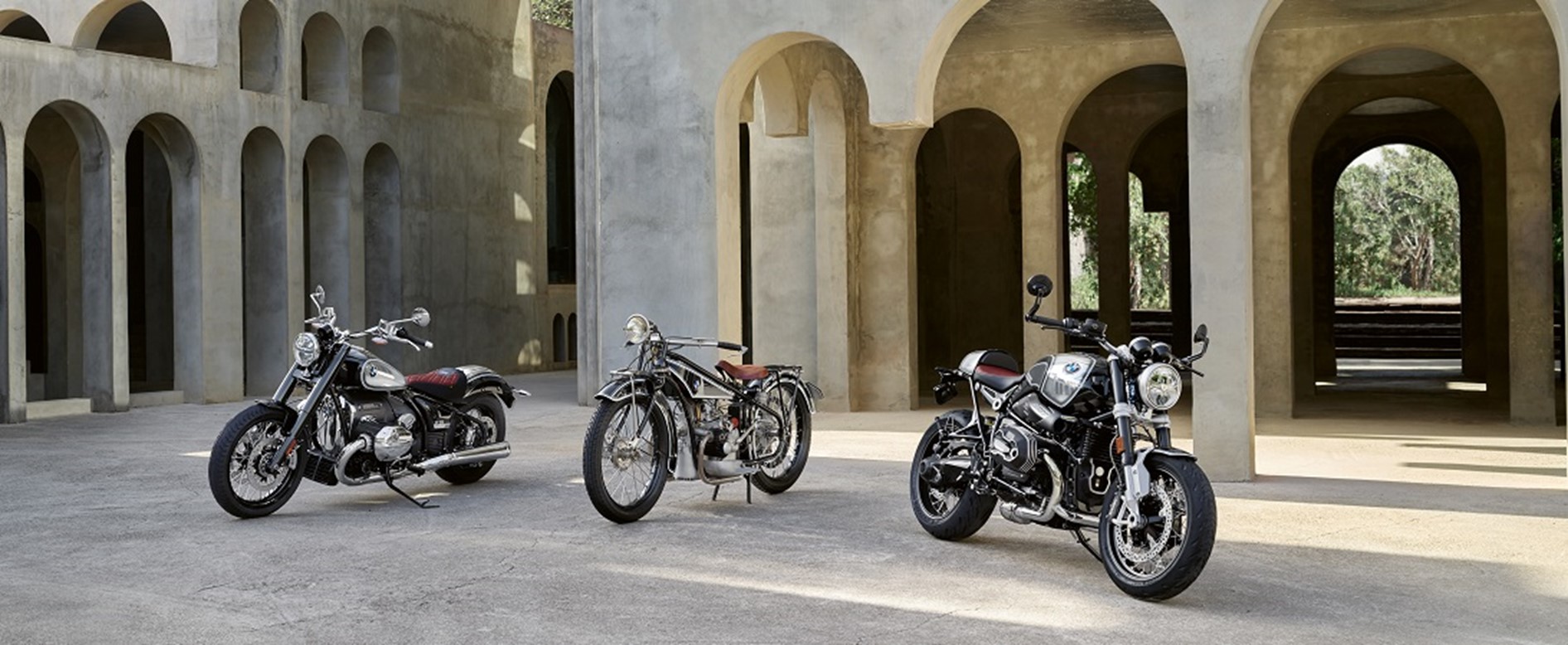 |
Laying down a bike is not the wisest of ideas to avoid collision- photo from www.autoevolution.com |
Now, all motorcycles are a little different. While a big ADV bike is going to benefit from huge engine bars and aluminum panniers, those parts wouldn’t fit on a Panigale and, even if they did, they’d look pretty stupid. Let’s go through some of the most common add-on protection parts for road-going motorcycles and examine how they safeguard your bike.

The most common protection part for street bikes, frame sliders attach to a motorcycle’s frame, engine block or both with sturdy bolts. Typically made from nylon, the sliders do what the name suggests — they protrude enough that they’re the first part to touch down in a fall, then they’re designed to slide freely along the road surface. Bikes experience more extreme damage when they grip the road and flip over. Your protection plan should start here if you ride a sportbike, naked, sport tourer, tourer or similar road bike.

Like “Kleenex” is used to describe all brands of facial tissue, “Barkbusters” is a specific brand of lever/hand protection products that ends up denoting all such items. Basically, a sturdy aluminum bar bolts to a new bar end weight on the outside, then clamps to the bar on the inside. This may be supplemented by a plastic plate designed to expand the area of coverage (these are killer wind deflectors for winter riding). The idea is to keep your levers from being broken in a crash. Broken levers equal an unrideable bike, so that’s a good idea. Because they is some give in the bar where it clamps onto the handlebars on the inside, it can absorb energy in a crash, possibly saving your bars from being bent or broken too. These typically fit any motorcycle with flat handlebars, but check the specs of the product against your bike to make sure. As good an idea on the road as they are off.

Aftermarket rearsets allow you to alter the position of your motorcycle’s footpegs. Any stock motorcycle should only be considered an ergonomic starting point, so these help there, but many rearsets also come with strong pegs that don’t fold up. Those work as auxiliary frame sliders, helping to keep the swingarm and bellypan off the ground.

These pass through the front axle, providing sliders for the front forks and brakes. The added protection isn’t as significant as frame sliders or rearsets or Bark Busters, so start with those first and add these after.

Same goes for these, but they double as mounting points for a paddock stand, making it easy to lift your rear wheel to change it or adjust the chain. Added protection is fairly minimal compared to other items on this list.

Aftermarket generator/clutch/crank covers made from billet aluminum or even composite nylon are tougher than stock cast aluminum items, resisting wear. You won’t put a hole through one of these but they’ll do little to protect the rest of your bike.

Not only do these cost less than stock fairings, but they’re often made of tougher materials too. Avoid trashing your expensive stock equipment while providing all-over protection for your bike with these.

Natty little press-on carbon fiber or similar tank covers provide some limited abrasion protection for the exposed sides of your fuel tank, but are more gimmick than function. Invest in a good pair of large, sturdy frame sliders instead.

These large, sturdy protection bars fit ADV and dirt bikes and provide massive amounts of protection in a topple. But, because they’re designed mostly for dirt crashes, they may grab pavement and topple your bike, actually exacerbating damage. A necessity while riding big, heavy ADV bikes off-road.

These cover a motorcycle’s exposed oil filter, downpipes and sump, protecting both against rocks thrown by the front wheel and impacts with obstacles. A very, very, very good idea while riding off-road; a holed sump is no fun.

It’s not built to do so, but you’d be amazed how effective both hard and soft luggage can be at protecting a motorcycle in a crash. Particularly the hard plastic and metal panniers that have been popularized by the ADV scene. Because they protrude so far, they provide excellent protection from drops, often keeping the entire motorcycle off the ground. Just be cognizant of how said luggage mounts to your bike, ideally you’ll have failure or stress relief points (ie joints or connections) between the luggage and the subframe, giving energy a place to go other than into your motorcycle.

In addition to making it clear to each and every person around you just how much you have to compensate for, aftermarket exhausts are often cheaper than their stock counterparts. Because of that, replacing one after a crash costs less money. Please don’t use this to justify running a 120dB system on the street.
Those are some things that can help your bike stay intact during a crash or a topple. What aftermarket parts do you swear by?
Originally appeared in Rideapart.com
No comments:
Post a Comment